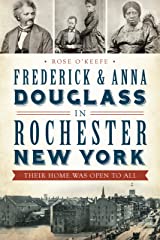World Treasures
The obit for Autherine Lucy, 92, (March 26) told of the first Black woman to arrive at the University of Alabama in Tuscaloosa in 1956. She and another Black woman had applied three years earlier. In between their acceptance and her arrival, was a law suit by the NAACP against UA. On her first day in February 1956, she could not eat in the cafeteria, stay in the dorms and after classes drove 60 miles back to Birmingham. Due to fierce harassment, the university suspended her after three days, and then expelled her. She shifted her dream of wanting to study into marriage and family life. Her harrowing three days gave her fame in the civil rights movement, and in 1988, she lectured there. After UA rescinded her expulsion, she applied to the graduate program in education and received her master's degree in 1992, along with her daughter who was graduating. A red brick clock tower was named in her honor in 2010, and she received an honorary doctorate in 2019. The hall where she had fled to escape violence decades earlier was renamed in her honor in 2022, replacing a man who had been a state governor and leader in the Ku Klux Klan.
How seldom I’ve heard about remarkable women like Dervla Murphy, 90. Her obit (June 11) told of her change from caring for her disabled mother and ageing father, to traveling around the world on a bicycle. At age 31,she started a long trek of 4,500 from Ireland to Delhi; another one 1,300 miles along the Andes; and others in Southern Africa, Madagascar, the middle east. She favored a particular bike that had two bag holders for 28 pounds of gear. An important supply were notebooks for the diaries that led to 26 books and the title of Irish National treasure. Murphy had a pistol and used it as needed. As she got older, she had few regrets. One was a strong wish to have visited Tibet and other remote locations.
The snapshot of Paula Rego, a Portuguese-British artist, 87, was somber. But her obit (June 18) was a testament to her surviving a strict, conservative, upper-middle-class upbringing. Rego found relief from the strict obedience her father demanded and the sexual abuse and forced abortions she endured by pouring out revenge on canvas. Her stony mother showed up as a cabbage. Her tyrannical husband as an ugly blob. The women she painted were not thin, manicured types. She used paint and colored pastels sticks vigorously. She suffered a deep depression in the 1960s. In the 70s when Portugal did not legalize abortion, she did a large series of pastels of women, alone during their ordeals. The press later used them during a second campaign that passed in 2007. After Rego discovered printing, etching, aquatints and lithographs, her prints and etchings of English nursery rhymes became popular. Popularity was never her goal.
On a happy note, I picked up four Newbery award winners from the library.
blog post. https://rokeefehistory.com/blog #amreading; #RochesterNY; #TheEconomist; #AbuelaCristina; #AutherineLucy; #DrevlaMurphy; #PaulaRego; #NewberyAwards;


